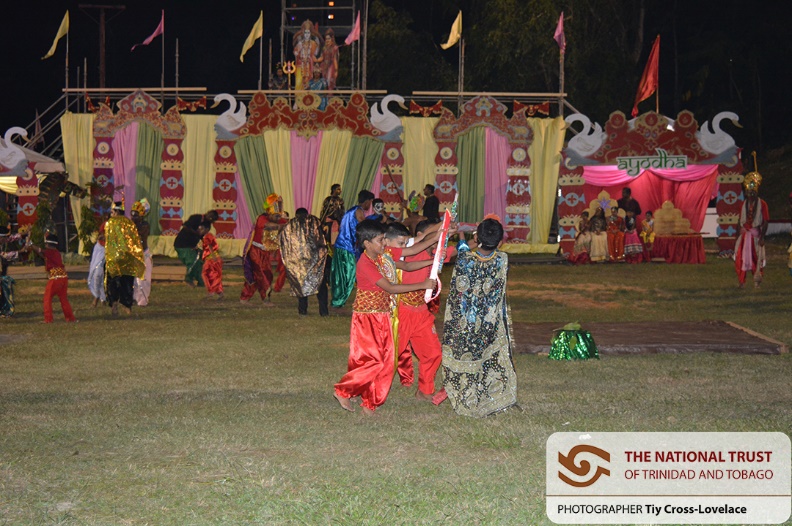Ram Leela Preformed in Trinidad and Tobago islands
The tradition of performing Ram Leela is still carried in Trinidad and Tobago islands by Indian Diaspora, who
migrated to the island as indentured laborers, from India.

Lok in Bharat was and remains the mainstream. The journey of Ramlila along with the indentured labourers in the past provides a case study to substantiate the claimOver the centuries, Ramlila has evol…
Today, Ramalila is staged in most countries those with immigrant Hindu populations from the Indian subcontinent, including from India, Nepal and Pakistan. Outside the Indian subcontinent, this include…
The Rama story is also enacted in another popular art form as a nighttime fire shadow or daytime puppet show. It is known as Tolapavakuthu in Kerala, Ravanachaya in Odisha, Nang sbek them in Cambodia,…
According to a pundit of Charlieville (central Trinidad), “It is believed that the first performance of Ramlila in Trinidad was rendered in Bhojpuri. As early as the 1880s, Bhojpuri was spoken by indentured Indians in Trinidad. Therefore, memorising, understanding and chanting of the Ramcharitmanas in Bhojpuri as well as watching and acting in Ramlila plays were not an impossible task.
Who were indentured labourers?
These were laborers that the British recruited to work in their plantations across different colonies on account
of abolition of Slave trade in 1834 in the British Empire.
Often referred to as Girimityas.
They were mostly from the states of Uttar Pradesh, Bihar and Tamil Nadu.
Settled in 19 colonies of the British including Fiji, Mauritius, Sri Lanka, Trinidad, Guyana, Malaysia,
Uganda, Kenya, and South Africa.
Abolition of Indentured labour
In 1916, Madan Mohan Malviya moved a resolution in the Indian Legislative Council for the abolition of the
indenture system.
Later, it was officially abolished by British government in 1917.
In South Africa, under the Smuts Gandhi Settlement (1914), Gandhiji obtained a waiver from Poll- tax for the
indentured laborers.
Significance
Cultural: played an important role in the Spread of Indian Culture across the globe by building temples for
Indian gods and celebrating the Indian festivals and rituals to date.
Diaspora: many laborers became small planters themselves, playing major roles in the political and economic aspects and pioneers of the Indian diaspora in those societies.
